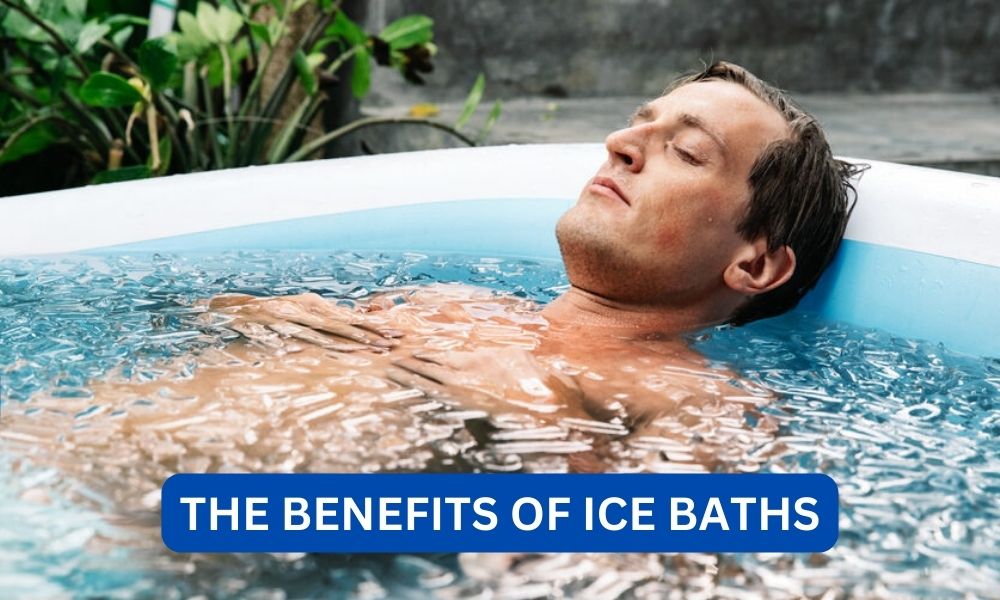Ice baths, also known as cold water immersion or cryotherapy, have been used for centuries as a form of therapy for various ailments. However, in recent years, they have gained popularity among athletes and fitness enthusiasts as a way to enhance performance and aid in recovery. While the idea of submerging oneself in freezing cold water may seem daunting, the benefits of ice baths are numerous and well-supported by scientific research. In this article, we will explore the benefits of ice baths and why athletes swear by them.
Contents
What is an Ice Bath?
An ice bath is a form of cold therapy that involves immersing the body in cold water for a short period of time, typically between 5 to 15 minutes. The water temperature is usually between 50 to 59 degrees Fahrenheit (10 to 15 degrees Celsius). Some athletes also add ice cubes to the water to make it even colder.
The idea behind ice baths is that the cold water causes blood vessels to constrict, reducing blood flow to the muscles. This, in turn, reduces inflammation and swelling, which can help with muscle recovery and pain relief. Once the body is removed from the cold water, blood flow increases, bringing fresh oxygen and nutrients to the muscles.
Read:What is coq10 benefitsThe Benefits of Ice Baths
While the use of ice baths for athletic recovery is still a relatively new concept, there is a growing body of research that supports its benefits. Here are some of the key benefits of ice baths:
- Reduced Inflammation and Muscle Soreness: One of the main benefits of ice baths is their ability to reduce inflammation and muscle soreness. When we exercise, our muscles experience micro-tears, which can lead to inflammation and soreness. The cold water in an ice bath helps to constrict blood vessels, reducing blood flow to the muscles and decreasing inflammation. This can help to alleviate muscle soreness and speed up the recovery process.
- Improved Muscle Recovery: Ice baths have been shown to improve muscle recovery after intense exercise. A study published in the Journal of Science and Medicine in Sport found that athletes who used ice baths after a workout had less muscle damage and were able to perform better in subsequent workouts compared to those who did not use ice baths.
- Pain Relief: The cold water in an ice bath can also act as a natural pain reliever. The cold temperature numbs the nerve endings, reducing the sensation of pain. This can be especially beneficial for athletes who are dealing with injuries or chronic pain.
- Improved Circulation: While the initial cold water immersion causes blood vessels to constrict, once the body is removed from the cold water, blood flow increases. This can help to improve circulation and bring fresh oxygen and nutrients to the muscles, aiding in their recovery.
- Reduced Swelling: Ice baths can also help to reduce swelling in the body. When we exercise, our muscles produce waste products such as lactic acid, which can cause swelling and discomfort. The cold water in an ice bath can help to flush out these waste products, reducing swelling and promoting faster recovery.
- Mental Benefits: In addition to the physical benefits, ice baths can also have a positive impact on mental well-being. The shock of the cold water can trigger the release of endorphins, which are feel-good hormones that can help to improve mood and reduce stress and anxiety.
Case Studies and Examples
Many professional athletes and sports teams have incorporated ice baths into their training and recovery routines. Here are a few examples of how ice baths have helped athletes:
Read:What benefits do mushrooms have?- LeBron James: NBA superstar LeBron James is known for his intense training regimen and dedication to recovery. He has been using ice baths for years and credits them with helping him to stay in top physical shape. In an interview with Men’s Health, James said, “I do a lot of ice baths, and I do a lot of cryotherapy. It’s definitely helped me out a lot in my career.”
- Novak Djokovic: Tennis champion Novak Djokovic is another athlete who swears by ice baths. He has been using them since he was a teenager and believes they have played a significant role in his success. In an interview with The Telegraph, Djokovic said, “I have been using ice baths for many years now, and I think they are one of the reasons why I have been able to stay relatively injury-free throughout my career.”
- New Zealand All Blacks: The New Zealand All Blacks, one of the most successful rugby teams in the world, have been using ice baths as part of their recovery routine for years. In an interview with The Guardian, team doctor Tony Page said, “We use ice baths after every game and training session. It’s a key part of our recovery process, and we believe it helps to reduce muscle soreness and fatigue.”
The Science Behind Ice Baths
While the use of ice baths for athletic recovery is still a relatively new concept, there is a growing body of research that supports their effectiveness. A study published in the Journal of Athletic Training found that cold water immersion can significantly reduce muscle soreness and improve muscle recovery after intense exercise.
Read:Which is a benefit of quitting smoking?Another study published in the Journal of Science and Medicine in Sport found that ice baths can help to reduce inflammation and improve muscle recovery after high-intensity exercise. The study also noted that ice baths can help to improve performance in subsequent workouts.
Additionally, a study published in the International Journal of Sports Physiology and Performance found that ice baths can help to reduce muscle damage and improve muscle function after intense exercise. The study also noted that ice baths can help to reduce the risk of injury and improve overall athletic performance.
How to Take an Ice Bath
If you’re interested in trying an ice bath for yourself, here are some tips to help you get started:
- Fill a tub with cold water: Fill a tub or large container with cold water. The ideal temperature is between 50 to 59 degrees Fahrenheit (10 to 15 degrees Celsius).
- Add ice cubes (optional): If you want to make the water even colder, you can add ice cubes to the tub. However, this is not necessary, and you can still reap the benefits of an ice bath without adding ice.
- Submerge your body: Slowly lower your body into the tub, making sure that the water covers your entire body. You can also use a smaller container to target specific areas, such as your legs or arms.
- Stay in for 5-15 minutes: The recommended time for an ice bath is between 5 to 15 minutes. However, if you’re new to ice baths, you may want to start with shorter durations and gradually increase the time as you get used to it.
- Warm up afterwards: Once you’re done with the ice bath, make sure to warm up your body by taking a warm shower or wrapping yourself in a warm towel. This will help to bring your body temperature back to normal and prevent any potential cold-related injuries.
Are There Any Risks?
While ice baths are generally safe, there are some risks to be aware of. The most common risk is hypothermia, which occurs when the body’s core temperature drops too low. To avoid this, it’s essential to monitor the water temperature and limit the duration of the ice bath.
Additionally, people with certain medical conditions, such as heart problems or Raynaud’s disease, should consult with a doctor before trying an ice bath. It’s also important to listen to your body and stop if you experience any discomfort or pain.
Conclusion:
Ice baths may seem intimidating, but the benefits they offer are well worth the initial shock of the cold water. From reducing inflammation and muscle soreness to improving circulation and aiding in recovery, ice baths have numerous benefits for athletes and fitness enthusiasts. With the support of scientific research and the endorsement of top athletes, it’s no wonder that ice baths have become a popular recovery tool. So the next time you push your body to its limits, consider taking an ice bath to help you bounce back faster and stronger.








